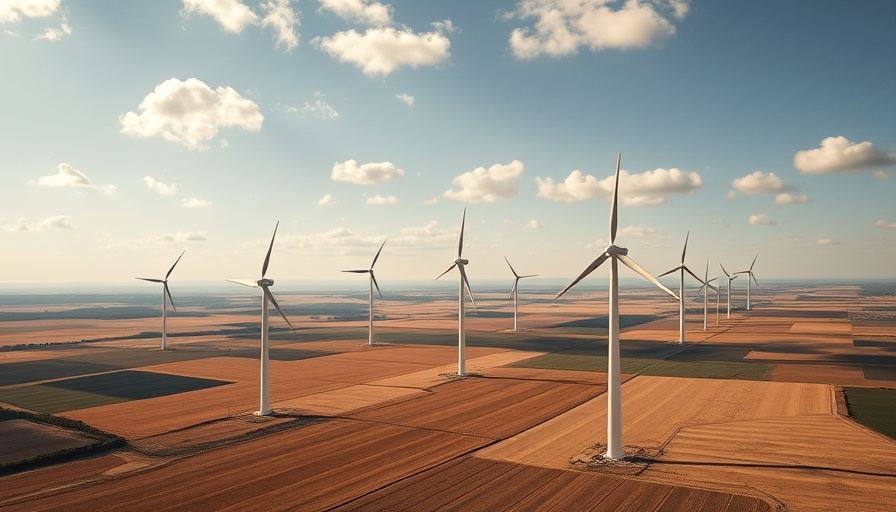
Harnessing Wind Energy: A Lifeline for Rural Communities
In Howard County, Iowa, wind farms are not just a source of renewable energy—they're a dynamic contributor to local economies. With nearly 150 turbines operational, the county generated over $2.7 million in tax revenue in 2024 alone. This income, which constitutes around 15 percent of the county's overall revenue, plays a crucial role in addressing infrastructure needs without burdening residents with additional taxes.
The Backstory: Why Iowa Embraces Wind
Iowa is one of the windiest states in the nation, and its leadership has turned this natural resource into a sustainable economic engine. The state has invested significantly in wind energy since the late 2000s, contributing nearly 60 percent of its electricity through this renewable source. Howard County's journey began in 2008, when it installed its first wind farm, laying the groundwork for an economic transformation.
Innovative Financing: A Game-Changer for Local Communities
The unique tax increment financing (TIF) approach adopted by Howard County is pivotal for maximizing economic impact. TIF allows the county to capture property tax revenue from new developments, like wind farms, and use it to fund infrastructure projects. This approach means that dollars generated from wind turbines go directly into improving roads, bridges, parks, and conservation efforts, benefiting the entire community.
Lessons Learned: Best Practices from Howard County
Experts note that Howard County's thoughtful zoning regulations have been essential to its success. By ensuring that developers meet clear standards while maintaining safeguards for residents, they have balanced the benefits of wind development with community needs. This model serves as an exemplary case for other rural areas aiming to pursue similar sustainability goals.
Facing Challenges: Addressing Community Concerns
Concerns about the long-term impact of wind turbines on local landscapes and property values are valid. However, Howard County's proactive measures such as community engagement sessions and legislative oversight help assuage fears about potential negative consequences, making the case for wind energy more palatable for residents.
Similar Success Stories: A Nationwide Trend
Howard County is not alone in its achievements. Across the U.S., similar strategies have yielded positive results in rural communities, demonstrating that renewable energy can bolster local economies. Places like Texas and Illinois have adopted similar TIF structures to enhance their wind energy portfolios, paving the way for a greener future.
Looking Ahead: Opportunities for Eco-Conscious Hospitality
For boutique hospitality professionals, embracing wind energy presents a unique opportunity. Incorporating clean energy solutions, such as off-grid solar systems alongside wind power, aligns with sustainability goals while appealing to eco-conscious travelers. As customers increasingly seek green credentials in their choices, investing in renewable energy infrastructures can offer a dual benefit: reducing operating costs and enhancing your establishment’s appeal.
Join the Movement: Actionable Steps for Local Businesses
Adopting renewable energy solutions is not limited to large enterprises. Small-scale hotel owners and eco-lodge operators can start by exploring partnerships with local wind farms or investing in solar-powered technologies. These steps not only help reduce reliance on fossil fuels but also position your business as a leader in sustainability.
It's time for hospitality pros to harness the power of wind and sustainability. Transitioning your operations toward eco-friendly practices is more than just good for the earth—it's a business strategy that appeals to today's conscious consumers.
 Add Row
Add Row  Add
Add 




Write A Comment